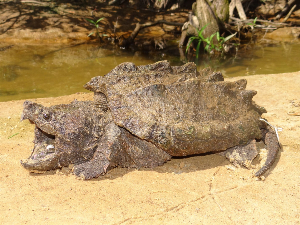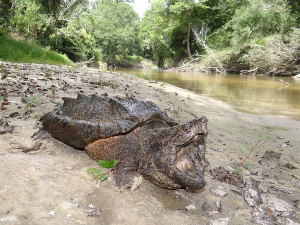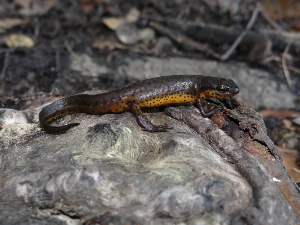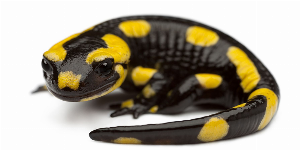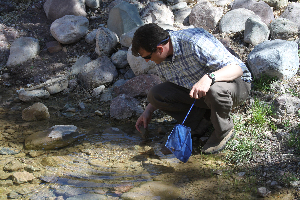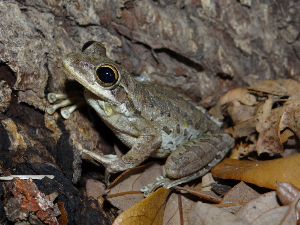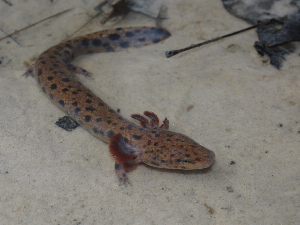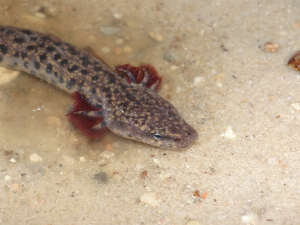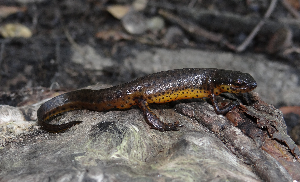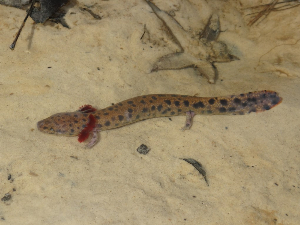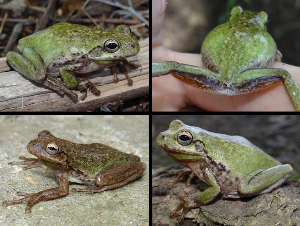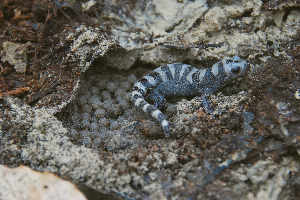Search ARMI Database
Search term(s)
Contribution Number
Search Results
65 record(s) found.
Papers & Reports A trapping survey targeting head-started alligator snapping turtles in southwest Louisiana
Data Release Data from a turtle trapping effort at a release site of head-started alligator snapping turtles, Macrochelys temminckii, in southwest Louisiana in 2018
Papers & Reports Egg counts of Southern Leopard Frog, Lithobates sphenocephalus, egg masses from southern Louisiana, USA
Papers & Reports Batrachochytrium salamandrivorans (Bsal) not detected in an intensive survey of wild North American amphibians
Papers & Reports Identifying management-relevant research priorities for responding to disease-associated amphibian declines
Papers & Reports Pre-publication communication of research results
Papers & Reports Quantifying climate sensitivity and climate driven change in North American amphibian communities
Papers & Reports Establishment of the exotic invasive Cuban treefrog (Osteopilus septentrionalis) in Louisiana
Papers & Reports Characterization of microsatellite loci for the Gulf Coast waterdog (Necturus beyeri) using paired-end Illumina shotgun sequencing and cross-amplification in other Necturus
Papers & Reports A new framework for analyzing automated acoustic species-detection data: occupancy estimation and optimization of recordings post-processing
Papers & Reports Prevalence of Batrachochytrium dendrobatidis and B. salamandrivorans in the Gulf Coast Waterdog, Necturus beyeri, from Southeast Louisiana, USA
News & Stories ARMI conducts national survey for salamander chytrid fungus
In 2016 ARMI and National Wildlife Health Center scientists conducted a nationwide sampling effort to detect the salamander chytrid fungus Batrachochytrium salamandrivorans (Bsal). Bsal is native to Asia where indigenous salamanders carry the fungus without disease symptoms. However, Bsal has been spread through human facilitation to Europe where it has been implicated in major population die-offs of wild salamanders. To date, no occurrence of Bsal has been documented in wild salamander populations in North America, but there is reason to think that it could arrive or already be here.
Between 2010 and 2014, 99% of the 750,000 salamanders imported into the U.S. were of Asian origin. Due to these obvious threats the U.S. Fish and Wildlife Service has halted importation of many salamanders, including the Asian species popular in the pet trade. However, we need to know if Bsal is already present. The introduction of Bsal into North American wild salamander populations could be particularly problematic given that North America is a global hotspot of salamander diversity being home to nearly half of all salamander species worldwide.
A current map of U.S. sites that have been surveyed to detect Bsal by the ARMI program is available on the ARMI website ( https://armi.usgs.gov/Bsal-studies/ ).
Papers & Reports Estimating occurrence and detection probabilities for stream-breeding salamanders in the Gulf Coastal Plain
Papers & Reports Quantitative evidence for the effects of multiple drivers on continental-scale amphibian declines
Papers & Reports ARMI 2014 Annual Update
Papers & Reports Testing hypotheses on distribution shifts and changes in phenology of imperfectly detectable species
We present a multi-season extension of the staggered-entry occupancy model of Kendall et al. (2013), which permits inference about the within-season patterns of species arrival and departure at sampling sites. The new model presented here allows investigation of species phenology and spatial distribution across years, as well as site extinction/colonization dynamics.
We illustrate the model with two datasets on European migratory passerines and one dataset on North American tree frogs. We show how to derive several additional phenological parameters, such as annual mean arrival and departure dates, from estimated arrival and departure probabilities.
Given the extent of detection/non-detection data that are available, we believe that this modeling approach will prove very useful to further understand and predict species responses to climate change.

